A complete guide to Hagi City, Yamaguchi Prefecture, a town that still retains its Edo period streetscape! - Access, sightseeing spots, souvenirs, and more

Hagi City, Yamaguchi Prefecture, is a charming town that still retains the atmosphere of the Edo period, when samurai lived. Hagi City has many attractions, including historical sites and magnificent nature! In this article, we will introduce essential travel information for sightseeing in Hagi City, from recommended sightseeing spots to access and souvenir information.
-
Table of Contents
- About Hagi City, Yamaguchi Prefecture
- How to get to Hagi City
- 3 recommended areas
- 8 recommended sightseeing spots
- 3 souvenirs from Hagi City
- Climate and clothing in Hagi City
- summary
About Hagi City, Yamaguchi Prefecture

Hagi City in Yamaguchi Prefecture is a town that still retains the atmosphere of the Edo period.
Hagi Castle was built in the Edo period (1604), and over 400 years have passed since the castle town was established. The castle town appearance has been preserved to this day, and Hagi is still a town where maps from the Edo period can be used as is.
During the late Edo period, the prefecture produced many Meiji Restoration patriots, including Yoshida Shoin, Kido Takayoshi, and Takasugi Shinsaku, and romantic historical sites such as their birthplaces and former homes remain in various places.
It is also the home ofHagi yaki pottery, known for the simple texture of the clay and the excellent quality of tea utensils, and is dotted with around 100 kilns.
If you go a little further from the castle town, you will find Unrinji Temple, famous as the Cat Temple, and Susa Hornfels, a cliff with vivid black and light gray stripes that is said to have been formed about 15 million years ago. Hagi is full of attractions in terms of history, culture, and nature!
How to get to Hagi City
*Access information is current as of 2024.
①By plane (Haneda Airport)
Fly from Haneda Airport to Yamaguchi Ube Airport or Hagi Iwami Airport.
・Recommended access from Yamaguchi Ube Airport
Take the Ube City Bus bound for JR Shin-Yamaguchi Station from the airport (approximately 30 minutes).
From JR Shin-Yamaguchi Station, take the direct bus "Super Hagi" or a local bus to Hagi city (about 60-75 minutes).
・Recommended access from Hagi/Iwami Airport
From the airport, take a shared taxi to Hagi city (approximately 70 minutes).
Taxi company: Hagi Kintetsu Taxi Co., Ltd. Fare: 2,800 yen
② Shinkansen
Take the Tokaido-Sanyo Shinkansen (Nozomi, Hikari, etc.) to JR Shin-Yamaguchi Station.
From JR Shin-Yamaguchi Station, take the direct bus "Super Hagi" or a local bus to Hagi city (about 60-75 minutes).
③Car
Take the Chugoku Expressway (toll road) from various locations and exit the highway at Minehigashi JCT. Take the Ogori-Hagi Road (free) which is a freeway connected to Minehigashi JCT. Exit the Ogori-Hagi Road at Edo IC and take National Route 490 and other routes to Hagi City. *It takes about 35 minutes from Minehigashi JCT to Hagi City.
3 recommended areas
Hagi area
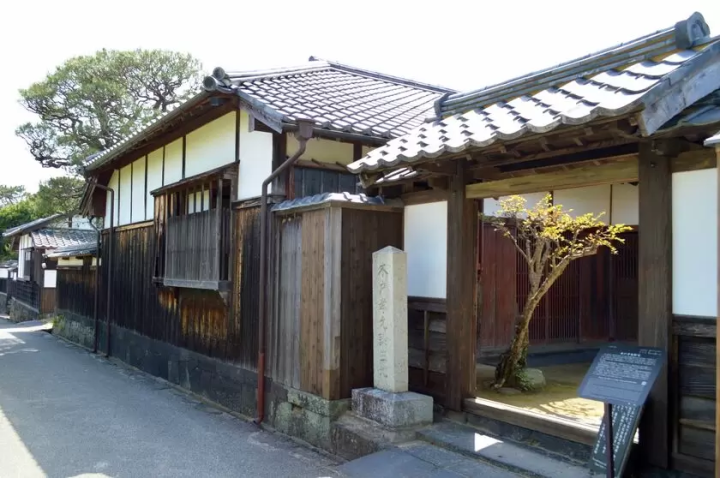
This area is home to a castle town that retains the townscape of the Edo period, as well as many places associated with Meiji Restoration patriots such as Yoshida Shoin and Takasugi Shinsaku.
Mutsumi area

There is Sunflower Road, where about 300,000 sunflowers bloom, and Unrinji Temple, affectionately known as the Cat Temple.
Access: About 30 minutes by car from Hagi city
Susa area

This area is home to the beauty of natural formations such as Susa Bay, a nationally designated scenic spot, Susa Hornfels, and Tatamigafuchi.
Access: About 40 minutes by car from Hagi city
8 recommended sightseeing spots
1. Hagi Castle Town [World Heritage Site] (Hagi area)
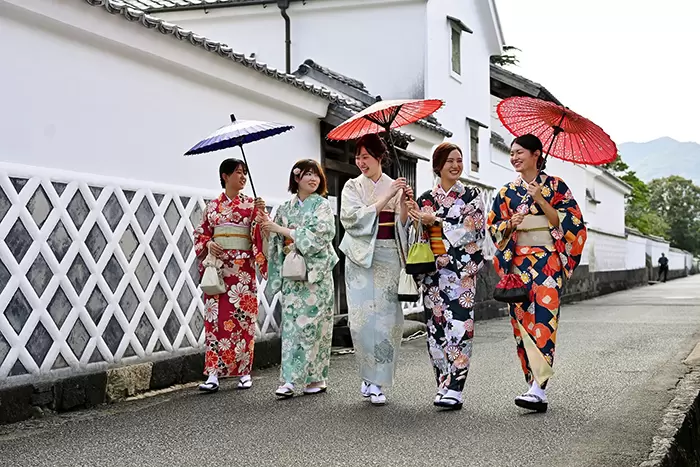
Hagi Castle Town retains its streetscape from the Edo period. Samurai residences are dotted among the beautiful streetscapes, such as Kikuya Yokocho with its white walls and namako walls, and Edoya Yokocho with its black board fences.
2. Shizuki Park, ruins of Hagi Castle [World Heritage Site] (Hagi area)
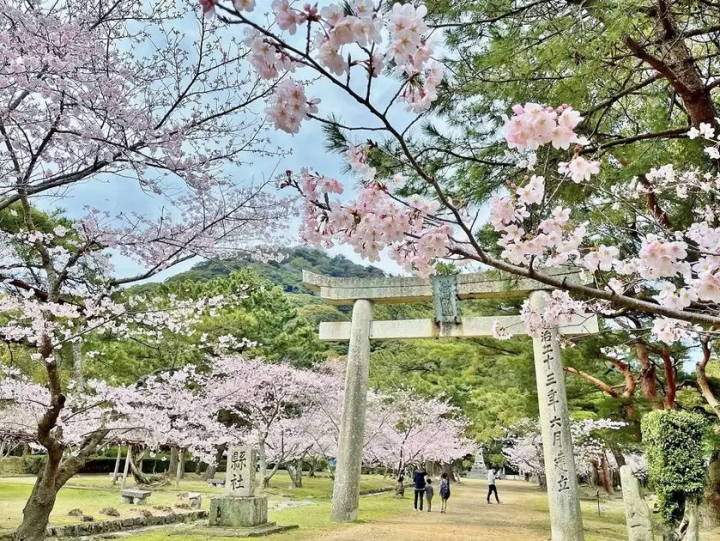
This is the ruins of the main castle of the Mori clan, lords of Hagi. In spring, it is a famous cherry blossom spot, with approximately 600 Somei-Yoshino cherry trees in full bloom. There is also one Midori-Yoshino cherry tree in the garden, which is rare in that it has pure white petals. This precious cherry tree can only be seen in Hagi in Japan.
3. Kikugahama Beach (Hagi area)
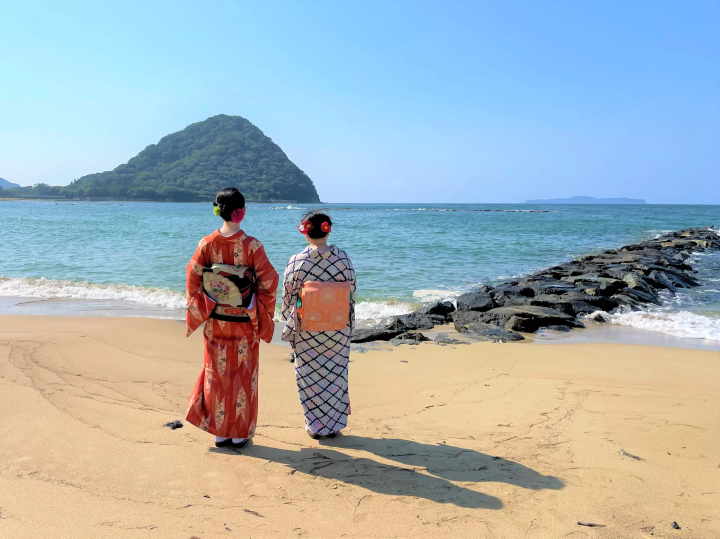
Kikugahama Beach, with its impressive white sand and green pines, is a great spot to watch the sun sink into the horizon in summer!
4. Hagi Meirin Gakusha (Hagi area)

Hagi Meirinkan School is built on the former site of the Hagi Domain's Meirinkan school. The main building houses the former Hagi Domain School Meirinkan Exhibition Room, the Geopark Visitor Center, and a restaurant. The second building houses the World Heritage Site Visitor Center, which introduces the World Heritage Site "Sites of Japan's Meiji Industrial Revolution," and the Bakumatsu Museum, where you can see about 500 rare and valuable items, including old Japanese guns.
5. Shokasonjuku Academy(World Heritage Site) (Hagi area)
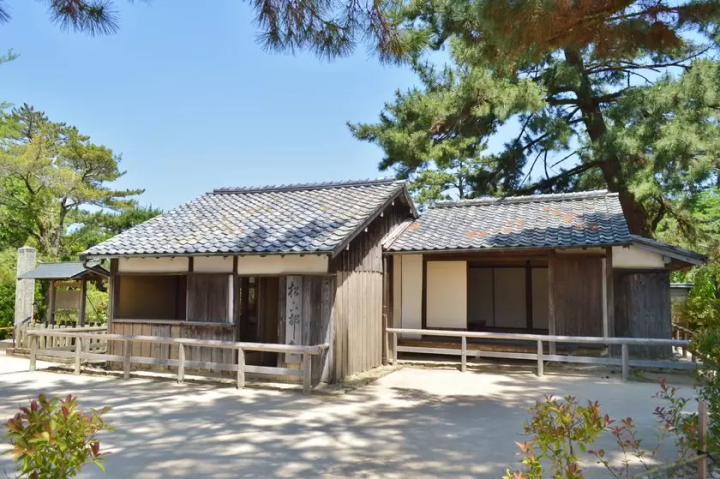
A private school run by Yoshida Shoin during the late Edo period. Shoin accepted students regardless of social status or class, and although he was there for just over a year, he nurtured many talented people who became the driving force behind the Meiji Restoration and played active roles in the new Meiji government.
6. Tokoji Temple (Hagi area)
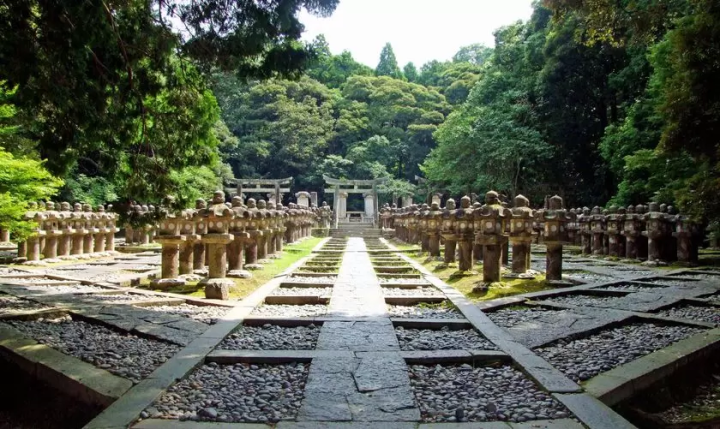
Tokoji Temple is the family temple of the Mori clan, the feudal lords of the Hagi domain, and enshrines the couples of the odd-numbered feudal lords from the 3rd to the 11th generation. The highlight is the approximately 500 stone lanterns at the graveyard.
7. Unrinji Temple (Cat Temple) (Mutsumi Area)
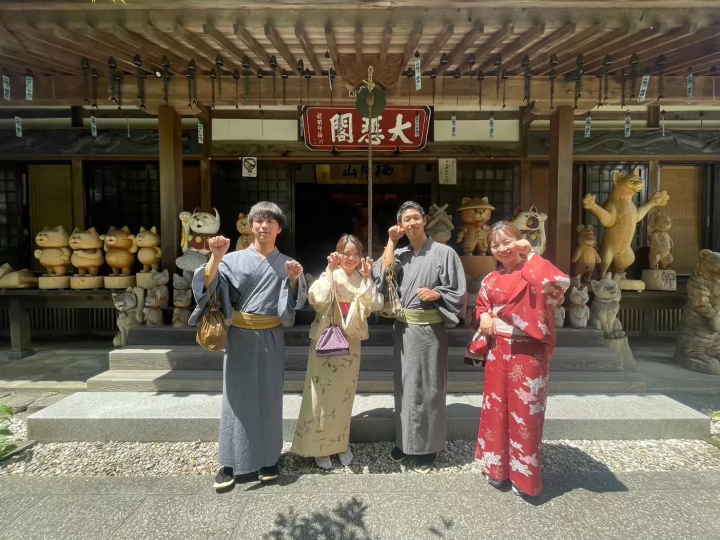
Unrinji Temple is popularly known as the "Cat Temple" and is home to a variety of cat figurines of all sizes, as well as cat fortune-telling slips, cat amulets, and cat votive plaques.
8. Susa Hornfels (Susa area)
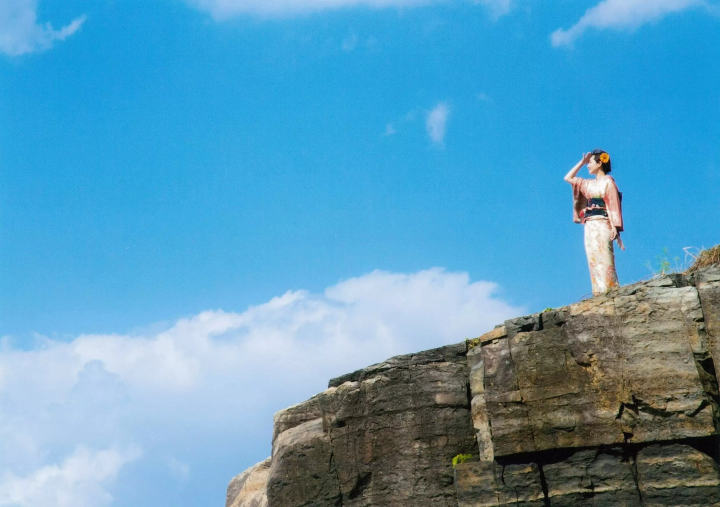
The symbol of the Susa region and a beautiful formation of nature, "Susa Hornfels" was formed 14 million years ago. It is characterized by its stripes that stand out clearly from the seabed as it is subjected to the rough waves of the Sea of Japan.
3 souvenirs from Hagi City
1. Hagi yaki pottery: a traditional craft with 400 years of history

Hagi yaki pottery boasts a history of over 400 years. It has been designated a traditional craft and is highly regarded both in Japan and overseas for its artistic quality. In recent years, many dishes for the dining table have been made using this pottery, and its diversity is what makes it so appealing. There are many kilns in the city, and some even offer tours of the production process and hands-on experience. Why not find your favorite kiln?
2. Summer orange sweets - a classic Hagi souvenir that has been loved for many years

"Summer mandarins" are a specialty of Hagi City. Summer mandarin trees can be seen here and there in Hagi, and the sight of yellow summer mandarin fruits peeking out from the white walls and earthen walls is beloved as a view unique to Hagi.
Sweets made from summer mandarins are very popular as souvenirs! In particular, "pickled summer mandarins" are Japanese sweets made by hollowing out the flesh of a summer mandarin, pickling the skin in sugar, and pouring summer mandarin yokan into the inside. They have been loved by the people of Hagi for many years.
3. Kamaboko - "Yaki-nuki Kamaboko" made using a method unique to Yamaguchi Prefecture
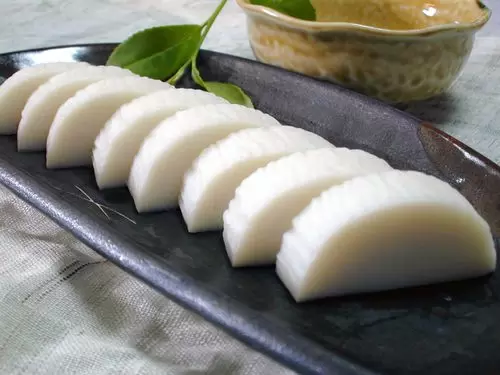
Hagi is the birthplace of Yaki-nuki Kamaboko, made using a traditional method unique to Yamaguchi Prefecture. Kamaboko is generally made in Japan by placing fish paste on a board and steaming it to harden, but Hagi's kamaboko is unique in that it is not steamed but baked over low heat, as the name Yaki-nuki Kamaboko suggests. By slowly baking over low heat for a long period of time, it has a unique springy elasticity and a glossy skin. Fresh lizardfish and small sea bream caught in the Sea of Japan are processed into paste, so you can enjoy the original taste of the fish with an exquisite natural saltiness. The skill of the artisan shines through in each and every piece.
Climate and clothing in Hagi City
Spring (March – May)
March: The average temperature is about 10°C. In the beginning of the month, there can be drastic temperature changes due to the lingering winter weather, so you will need a spring coat.
April: The average temperature is about 14°C. During the day, it can reach nearly 20°C, so you can wear a long-sleeved shirt or a thin outer layer, but it gets cold at night, so you'll need to take measures to protect yourself from the cold.
May: The average temperature is about 18°C. The new greenery is beautiful and the weather is warm, so you can wear shirts and cardigans.
Summer (June to August)
June: The average temperature is about 20°C. June is the rainy season, but there is little rain in the beginning of the month. Shirts and cut-and-sew tops are fine. The rainy season begins from mid-June to mid-July, so you will need to bring rain gear.
July: The average temperature is about 27°C. In recent years, the maximum temperature has often exceeded 30°C even in July. Short sleeves are recommended, and you will also need to protect yourself from the sun with a hat or parasol.
August: The average temperature is about 29°C. In August, the maximum temperature continues to rise to 30-36°C. As in July, short sleeves are recommended. To prevent heatstroke, it is necessary to bring sun protection products and stay hydrated! Also, since the air conditioning is on indoors, it is useful to bring a thin cardigan if you don't like air conditioning.
Autumn (September – November)
September: The average temperature is about 25°C. In recent years, the maximum temperature has often exceeded 30°C even in September. Short sleeves are recommended, but it can get cool at night, so a thin cardigan or similar item is useful.
October: The average temperature is about 18°C. In October, the weather changes to autumn and the weather is nice and sunny, so you can wear a shirt and a light outer layer.
November: The average temperature is about 13°C. It gradually becomes chilly. The average minimum temperature is about 9°C. You will need an autumn coat or scarf.
Winter (December to January)
December: The average temperature is about 9°C. This is the beginning of winter. In the beginning of the month, the average maximum temperature is still around 15°C, but from the middle of the month onwards, it gets colder with the average minimum temperature dropping to about 5°C. You will need a thick coat.
January and February: The average temperature is about 6°C. This is the coldest time of the year. You will need to bring warm clothing such as a thick coat, scarf, and gloves. If you are coming by car, we recommend that you bring studless tires as the roads in the mountain areas may be frozen.
summary
Above, we have introduced information about Hagi City's recommended sightseeing spots, how to get there, souvenirs, etc. We hope that this information will be helpful for your trip.
We look forward to welcoming you to Hagi City!
The castle town of Hagi, including the ruins of Hagi Castle, samurai residences, townhouses, former homes of Meiji Restoration patriots, temples and shrines, has become an urban heritage that has been inherited to this day. Historic sites remain throughout the town, and Hagi is like an open-air museum.
The contents on this page may partially contain automatic translation.

![[Hagi City, Yamaguchi Prefecture] We introduce you to Hagi Castle Town, where the beautiful streetscape from the Edo period remains!](https://resources.matcha-jp.com/resize/200x2000/2024/10/15-202623.webp)



























![[2026] Top 5 Strawberry Picking Spots in Tokushima, Naruto| Farms and Access Guide for January to May](https://resources.matcha-jp.com/resize/720x2000/2025/03/06-227165.webp)


